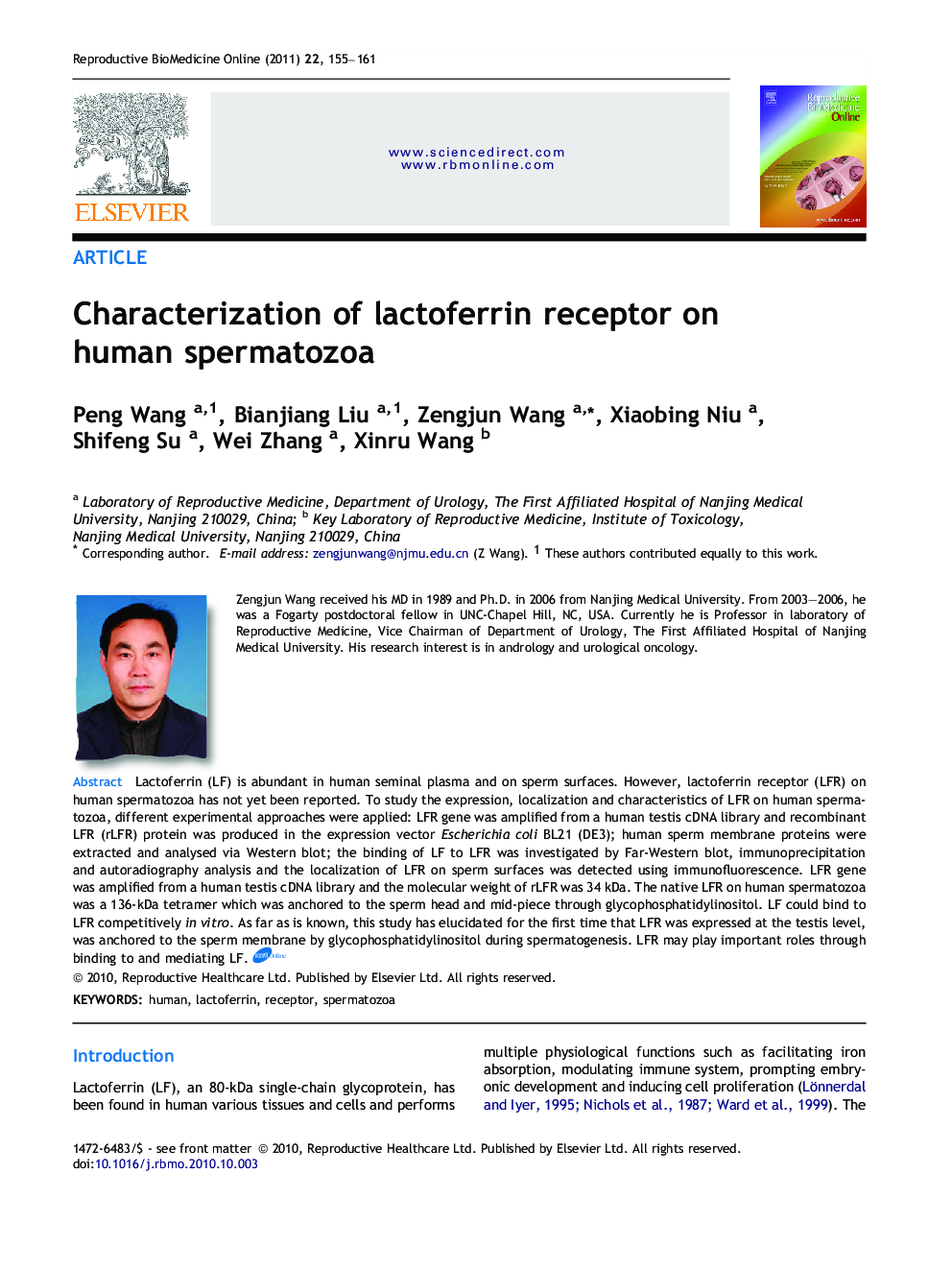| Article ID | Journal | Published Year | Pages | File Type |
|---|---|---|---|---|
| 3971270 | Reproductive BioMedicine Online | 2011 | 7 Pages |
Lactoferrin (LF) is abundant in human seminal plasma and on sperm surfaces. However, lactoferrin receptor (LFR) on human spermatozoa has not yet been reported. To study the expression, localization and characteristics of LFR on human spermatozoa, different experimental approaches were applied: LFR gene was amplified from a human testis cDNA library and recombinant LFR (rLFR) protein was produced in the expression vector Escherichia coli BL21 (DE3); human sperm membrane proteins were extracted and analysed via Western blot; the binding of LF to LFR was investigated by Far-Western blot, immunoprecipitation and autoradiography analysis and the localization of LFR on sperm surfaces was detected using immunofluorescence. LFR gene was amplified from a human testis cDNA library and the molecular weight of rLFR was 34 kDa. The native LFR on human spermatozoa was a 136-kDa tetramer which was anchored to the sperm head and mid-piece through glycophosphatidylinositol. LF could bind to LFR competitively in vitro. As far as is known, this study has elucidated for the first time that LFR was expressed at the testis level, was anchored to the sperm membrane by glycophosphatidylinositol during spermatogenesis. LFR may play important roles through binding to and mediating LF.Lactoferrin (LF) exists in a variety of human tissues and cells and has multiple physiological functions. Lactoferrin receptor (LFR), which is suggested to specifically bind to LF and has pivotal roles for mediating LF functions, has been identified in several types of tissues and cells. Previous studies have revealed that LF is abundant in human seminal plasma and on sperm surface. However, LFR on human spermatozoa has not yet been reported. Different experimental approaches were applied to study the presence, localization and characteristics of LFR on human spermatozoa. LFR gene was amplified successfully from a human testis cDNA library and the molecular weight of rLfR was 34 kDa. The native LFR on human spermatozoa was a 136-kDa tetramer which was anchored to the sperm head and midpiece through glycophosphatidylinositol. LF could bind to LFR competitively in vitro. Data in this study provide a valuable source for future research, which are beneficial to reveal the new binding characteristics of LF to LFR, to clarify the molecular mechanism of LFR in modulating sperm functions and semen liquefaction and to explore the aetiology and pathogenesis of some male infertility.
